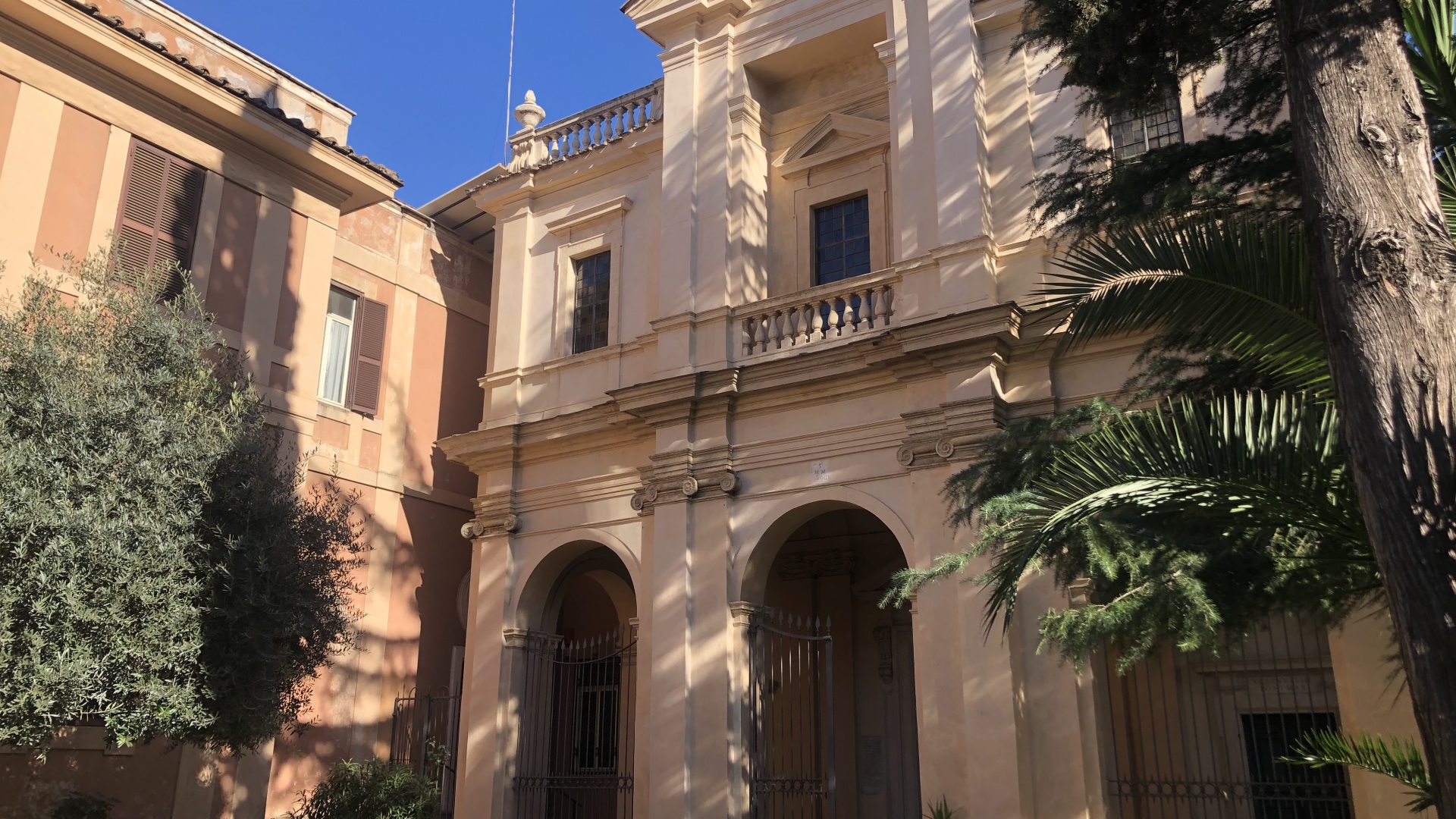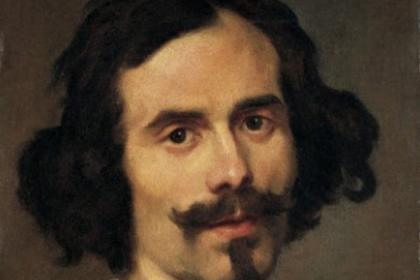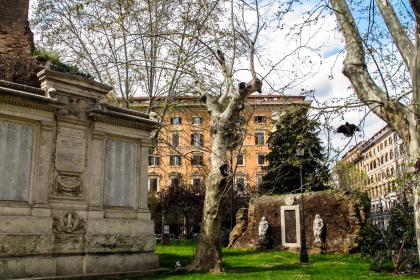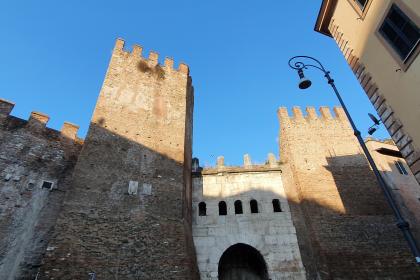
Located close to Termini Station, the church of Santa Bibiana has very ancient origins dating back to 468, according to some sources that also hold to be true that it was built on the remains of 11,266 martyrs. According to the legend, however, the church was built in 363 in the place where Santa Bibiana lived and was buried after being scourged to death, on December 2th, 362, during the persecutions taking place under the reign of the emperor Julian known as the Apostate, for not wanting to abjure the Christian faith. Her remains rest under the main altar protected in a precious alabaster urn that dates back to the era of Constantine.
Over the centuries, the church underwent several renovations, but was completely renovated between 1624 and 1625, commissioned by Pope Urban VIII, by a young Gian Lorenzo Bernini who ventured into his first architectural work in absolute with this restoration.
While making changes in the Baroque theme, the great artist worked with the greatest respect for the structure of the ancient church, without compromising the harmony of the lines and the humble and essential accuracy. He enhanced it with a new façade and a new portico, created two small chapels at the end of the side aisles and replaced the original apse with a main chapel which he adorned with stucco.
On the sides of the central entrance, preceded by a portico with three arched openings and marked by Ionic pillars with capitals and bases in travertine, there are two inscriptions, one in Gothic characters from the Middle Ages (13th century) and one in Latin recalling the convent and the cemetery where"eleven thousand two hundred sixty six bodies de martyri"rest.
Crossing the threshold of the church, on the left, is the trunk of the column which the saint was tied to during her martyrdom. Protected by a gilded bronze grating made on a design by Bernini, under which you can read the following caption: "Tied to this column, the unconquered martyr Santa Bibiana, with leaded ropes, was cruelly scourged", the column is partially worn out. The devotees of Santa Bibiana used to scrape it to collect the dust which, dissolved in the water of the well of the nearby garden and mixed with the grass that grew on the ground soaked in her blood, produced a drink with a highly thaumaturgical power.
The interior is divided into three naves, separated from each other by a double row of ancient columns of red-gray granite and white marble on which are placed capitals in composite and Corinthian styles.
On the main altar, Bernini placed the white marble statue of Santa Bibiana, which is also the first fully dressed figure sculpted by the artist.
The walls are decorated with frescoes by Agostino Ciampelli, painted between 1624 and 1625, depicting musician angels, overlooking or sitting on a richly decorated balustrade. The decoration continues below and presents friezes made up of torture instruments, made by Ciampelli himself.
Contemporary are the frescoes by Pietro da Cortona, made in the same years as those by Ciampelli. These represent the condemnation process and the death of Demetria, Bibiana's sister; the matron Rufina who tries to lead Bibiana into temptation; the flagellation of the Saint.
Other works of arrangement of the church were carried out in the following centuries, but respecting the restoration carried out by Gian Lorenzo Bernini.
Bernini's locations

I maestri dell’arte - Itinerari romani sulle tracce dei grandi artisti
 Condividi
Condividi
Vittorio Emanuele II Square

 Condividi
Condividi
The heart of the multi-ethnic Esquilino district
Porta Tiburtina

 Condividi
Condividi
Information
Mass schedules
Mondays: 18.00Tuesday: 18.00 hrs.Wednesday: 18.00Thursday: 18.00Friday: 18.00Saturday: 18.00Sunday and holidays: 08.30, 10.30
Times may be subject to change, so please always contact the church
 Condividi
Condividi
Location
To find out about all accessibility services, visit the Rome accessible section.











































